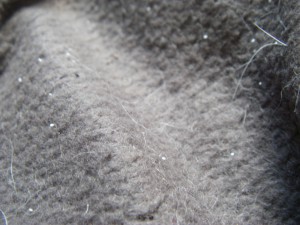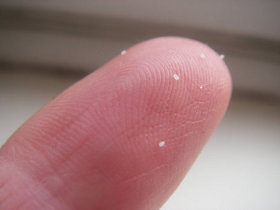Due to their exceptionally small size, flea eggs often go unnoticed in the home. Fleas are hard enough to spot, but finding their eggs can be next to impossible, especially if you aren’t familiar with their appearance and physical characteristics. But only killing adult fleas while leaving their eggs behind isn’t going to solve your problem, as the eggs will simply hatch and complete the life cycle. So, what do flea eggs look like?
Flea Eggs Greatly Outnumber Adult Fleas
Before we go into the physical characteristics of flea eggs, let me first stress the importance of eliminating them from your home. Fleas go through four different stages in their life cycle: egg, larvae, pupae and adult. Adult fleas typically make up just 5% of the entire population, wheres pupae make up 10%, larvae make up 35%, and eggs make up a whopping 50% of the population.
According to the statistics mentioned above, there are 10 times more eggs in than adult fleas. If you notice 10 adult fleas in your home, for instance, you can expect at least another 100 eggs lingering in your carpet, furniture and your pet’s bedding waiting for the right opportunity to hatch.
Flea Egg Appearance and Description
Flea eggs are typically small and white with an oval shape. Their size varies depending on the particular species and surrounding environmental conditions, but most flea eggs are no longer than 1 mm long.
Flea eggs are often found alongside flea feces in pet hair. Flea feces is black with a texture similar to charcoal, whereas flea eggs are white and more durable. Veterinarians refer to the combination of flea eggs and feces as “salt and pepper,” referring to their distinct coloring.
Exterminating Flea Eggs
Female fleas prefer to lay their eggs while attached to the host. Because of their oval shape and hard outer shell, the eggs may roll off the host and land on nearby bedding. If you’re dealing with a flea infestation in your home, you should pay close attention to your pet’s bedding, washing any blankets, pillows, beds or other linens.
Vacuuming can also prove useful in exterminating flea eggs. In addition to vacuuming your floors, you should also get underneath the furniture, around the baseboards, and under beds.
Using a flea comb on your pet will catch both fleas and eggs. If your pet has fleas, try brushing them with a comb once a day to pull off both adults and eggs.


